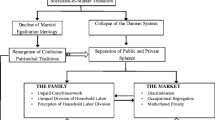Abstract
This paper works alongside other studies claiming the need for further elaboration of the theory of the demographic transition. A number of perspectives on the transition, some of them related to gender, democracy, education, and labour has, according to Tim Dyson, been insufficiently researched by social scientists. The most recently introduced material from the Demographic Database, forms from the Statistical Committee, have been used to chart the demographic transition in the northern-most counties in Sweden during the years between 1800–1850. The hypothesis being that even in these pre-urban and pre-industrialized societies, opportunities to connect with other parts of Sweden could be congruent to a faster progress through the demographic transition. This would lead to lower crude death rates and infant mortality in the coastal parishes. This was true to a certain extent, but this methodologically tentative study also affirms previous research on infant mortality and the need for smallpox vaccination and midwives.
Similar content being viewed by others
REFERENCES
Anderson, M. (1996). British population history - From the black death to the present day. Cambridge: Cambridge University Press.
Annual reports from the provincial physicians (ARPP). Serie E5A, Luleå, volume 6-18, 20-22, 25; Skellefteå, volume 8-22, 25; Lycksele, volume 10-17; Umeå, volume 7, 9-10, 12-19, 21-22, 25. Riksarkivet, Sundhetskollegium.
Bengtsson, M. (1996). Det hotade barnet - Tre generationers spädbarns och barnadödlighet i 1800-talets Linköping. Linköping: Linköping Studies in Arts and Science 145.
Brändström, A. (1984). De kärlekslösa mödrarna - Spädbarnsdödligheten i Sverige under 1800-talet med särkild hänsyn till Nedertorneå. Umeå: Acta Universitatis Umensis. Umeå studies in the humanities 62.
Brändström, A. (1988). The impact of female labour conditions on infant mortality: A case study of the parishes of Nedertorneå and Jokkmokk, 1800-1896. Social History of Medicine, 1(3), 330–358.
Clark-Nelson, M. (1988a). Bitter bread. The famine in Norrbotten. Uppsala.
Clark-Nelson, M. (1988b). Patterns of mortality in Sweden's northernmost County in the 1860s. In A. Brändström & L.-G. Tedebrand (Eds.), Society, health and population during the demographic transition. Umeå: Report no 4 from the Demographic Database, Almqvist & Wiksell International.
Dyson, T. (2001). A partial theory of world development - The neglected role of the demographic transition in the shaping of modern society. International Journal of Population Geography, 7, 67–90.
Edvinsson, S. (1992). Den osunda staden - Sociala skillnader i dödlighet i 1800-talets Sundsvall. Umeå: Report no 7 from the Demographic Database.
Edvinsson, S., Rogers, J., & Brändström A. (2002). Regional variations in infant mortality in Sweden during the first half of the 19th century. In L.-G. Tedebrand & P. Sköld (Eds.), Nordic demography in history and present-day society. Umeå: Scandinavian Population History, vol 12 and Report no 18 from the Demographic Database, Umeå University.
Gardarsdottir, O. (2002). Saving the child. Regional, cultural and social aspects of the infant mortality decline in Iceland, 1770-1920. Reykjavik: Report no 19 from the Demographic Database.
Johansson, S.R (1994). Food for thought - Rhetoric and reality in modern mortality history. Historical Methods, 27(3), 101–125.
MacKinnon, A. (1995). Were women present at the demographic transition? Questions from a feminist historian to historical demographers. Gender and History, 7(2), 222–240.
Nilsson, H. (1994). Mot bättre hälsa. Dödlighet och hälsoarbete i Linköping 1860-1894. Linköping: Linköping Studies in Arts and Science 105.
Sköld, P. (1996). The two faces of smallpox - A Disease and its prevention in eighteenth and nineteenth century Sweden. Umeå: Report no 12 from the Demographic Database.
Sköld, P. (2001). Kunskap och kontroll-den svenska befolkningsstatistikens historia. Umeå: Report no 17 from the Demograhic Database.
Szreter, S. (1988). The importance of social intervention in Britain's mortality decline c. 1850-1914: A reinterpretation of the role of public health. Social History of Medicine, 1, 1–37.
Willner, S. (1999). Det svaga könet-Kön och vuxendödlighet i 1800-talets Sverige. Linköping: Linköping Studies in Arts and Science 203.
Author information
Authors and Affiliations
Rights and permissions
About this article
Cite this article
Lundberg, A. Living the Transition — The Great Mortality Change Through the Lives of the Country Doctors. Interchange 34, 219–240 (2003). https://doi.org/10.1023/B:INCH.0000015902.92221.1e
Issue Date:
DOI: https://doi.org/10.1023/B:INCH.0000015902.92221.1e




